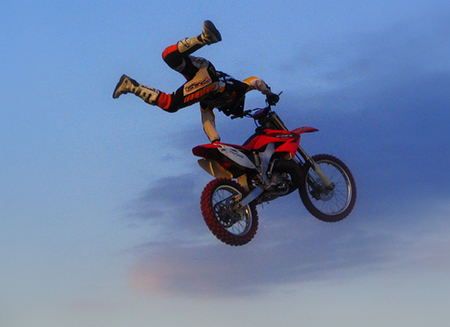Recommended
Because bikers are tougher than meteorologists. Just kidding! Read on…
Turn on the news when a hurricane makes landfall and there’s a good chance you’ll see a brave (or foolish) meteorologist reporting live from the scene of the storm. He or she is probably yelling into the microphone about how the wind’s so strong that he or she has to hold onto a tree, traffic sign, or telephone pole to keep from blowing away. But attention-seeking meteorologists are not the only people who have to hang on during very high winds—motorcyclists are, too, every day. They’re also fully exposed, but they can zoom along at very high speeds and not fly off the back of their motorcycles? Why not?
It all comes down to a force called drag, says Richard Perdichizzi, a technical instructor in the Department of Aeronautics and Astronautics who operates the Wright Brothers Wind Tunnel.“Drag is the force a body produces as the air moves around it,” he explains. The amount of force is a function of two factors—the body’s cross-sectional area, and its shape. The cross-sectional area is simply the size of the object facing the wind. According to Perdichizzi, “the average person presents approximately eight square feet of blockage.” But that’s only if you’re standing perfectly upright. If you stand sideways and suck in your stomach, or if you roll up into a ball, your cross-sectional area decreases and you’ll experience less drag force. This is essentially what a lot of motorcyclists do when they’re zipping down the highway. They put their heads and shoulders down and pull their knees up, minimizing their cross-sectional area.
Motorcyclists need to be able to see and steer their bikes, so there’s a limit to how small they can make their cross-sectional areas. This is where the shape of the motorcycle becomes important. The fairing—the contoured piece of metal or plastic covering the front of the motorcycle—and the windshield are specially designed to be as aerodynamic as possible. They smoothly deflect the air instead of stopping it or creating turbulence like a flat, boxy surface would. Stopped and turbulent air lead to more drag. Read more
Visit the MIT School of Engineering’s Ask an Engineer site for answers to more of your questions.








